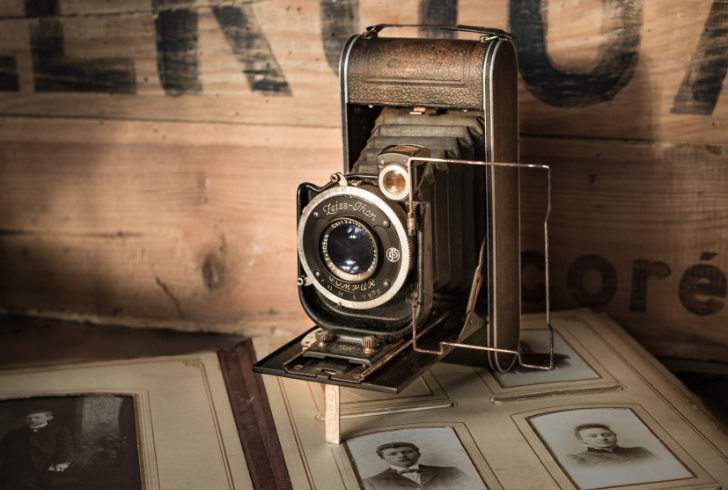Have you ever flipped through a dusty photo album, brimming with black and white portraits, and wondered why didn't people smile in old photos? Unlike today's social media feeds overflowing with grinning selfies and candid captures, old photographs depict a world where smiles are a rare commodity. But why did people hold such rigid expressions back in the day?
Let's delve into the fascinating reasons behind the lack of smiles in old photos.
Exploring the Reasons Why Didn't People Smile in Old Photos
1. Holding Still for History

Pexels | Skitterphoto | Early photography required subjects to hold still for several minutes due to slower cameras in the 1800s.
In the early days of photography, capturing a single image was a far cry from the instantaneous clicks of our smartphones. Cameras relied on slow chemical reactions, requiring exposure times that lasted for several agonizing minutes. Imagine trying to maintain a smile for that long! The slightest movement would result in a blurry, distorted image.
So, understandably, people opted for a more stoic expression to guarantee a clear photograph for posterity. This technical limitation, however, doesn't fully explain the absence of smiles throughout the 19th century. Even after exposure times dipped below a minute by 1845, the serious demeanor persisted.
2. A Matter of Social Perception

Pexels | Suzy Hazelwood | Historical photographs frequently depict subjects with pursed lips, regardless of their dental condition.
Another reason why didn't people smile in old photos relates to dental health. Before the advent of modern dental hygiene, many people had poor teeth. They preferred to keep their mouths closed to avoid revealing dental imperfections.
This explanation, while plausible, is not the strongest. After all, a smile doesn’t necessarily have to show teeth. Yet, during that era, people preferred to keep their lips prim and closed, maintaining a composed and dignified look.
3. The Serious Undertaking of Photography
Photography in its early days was a significant event, akin to the formality of having a portrait painted. People approached it with gravity, believing such an important moment deserved a serious expression. The famous author Mark Twain once remarked, “A photograph is a most important document, and there is nothing more damning to go down to posterity than a silly, foolish smile caught and fixed forever.”
Smiling was seen as inappropriate for such a solemn occasion. In a 2013 article titled “The Serious and the Smirk: The Smile in Portraiture,” art historian Nicholas Jeeves notes that smiles were associated with frivolity and lower social standing. Portrait artists often depicted smiling individuals as imps, drunkards, or fools. No one wanted to be remembered in such a manner, and this sentiment carried over into the realm of photography.
The Dawn of a New Era

Freepik | By the mid-20th century, smiles became a staple in photos, capturing life's moments with casual dynamism.
The arrival of motion pictures in the 1920s marked a turning point. Unlike still photographs, movies showcased the entire range of human emotions – joy, sadness, anger, grief, and yes, even silliness. This shift in how we documented ourselves opened the door to capturing a wider spectrum of expressions in photographs as well. By the mid-20th century, the smile had finally become a permanent fixture in the photo frame, reflecting a more relaxed and expressive approach to capturing memories.
So, the next time you browse through a collection of old photographs, remember the story behind those serious faces. It's a testament to the evolution of not just photography, but also our cultural understanding of how we want to present ourselves to the world.



